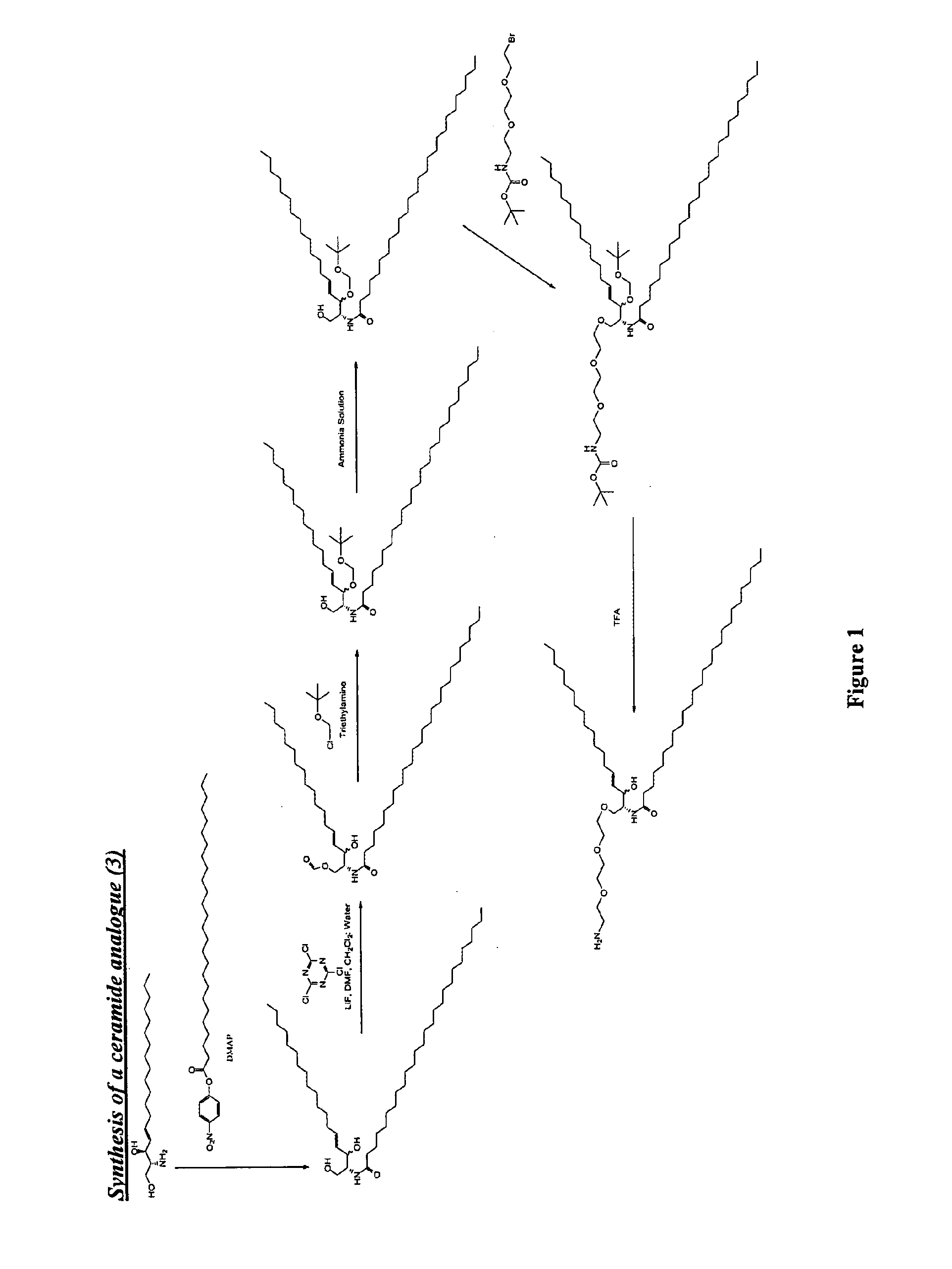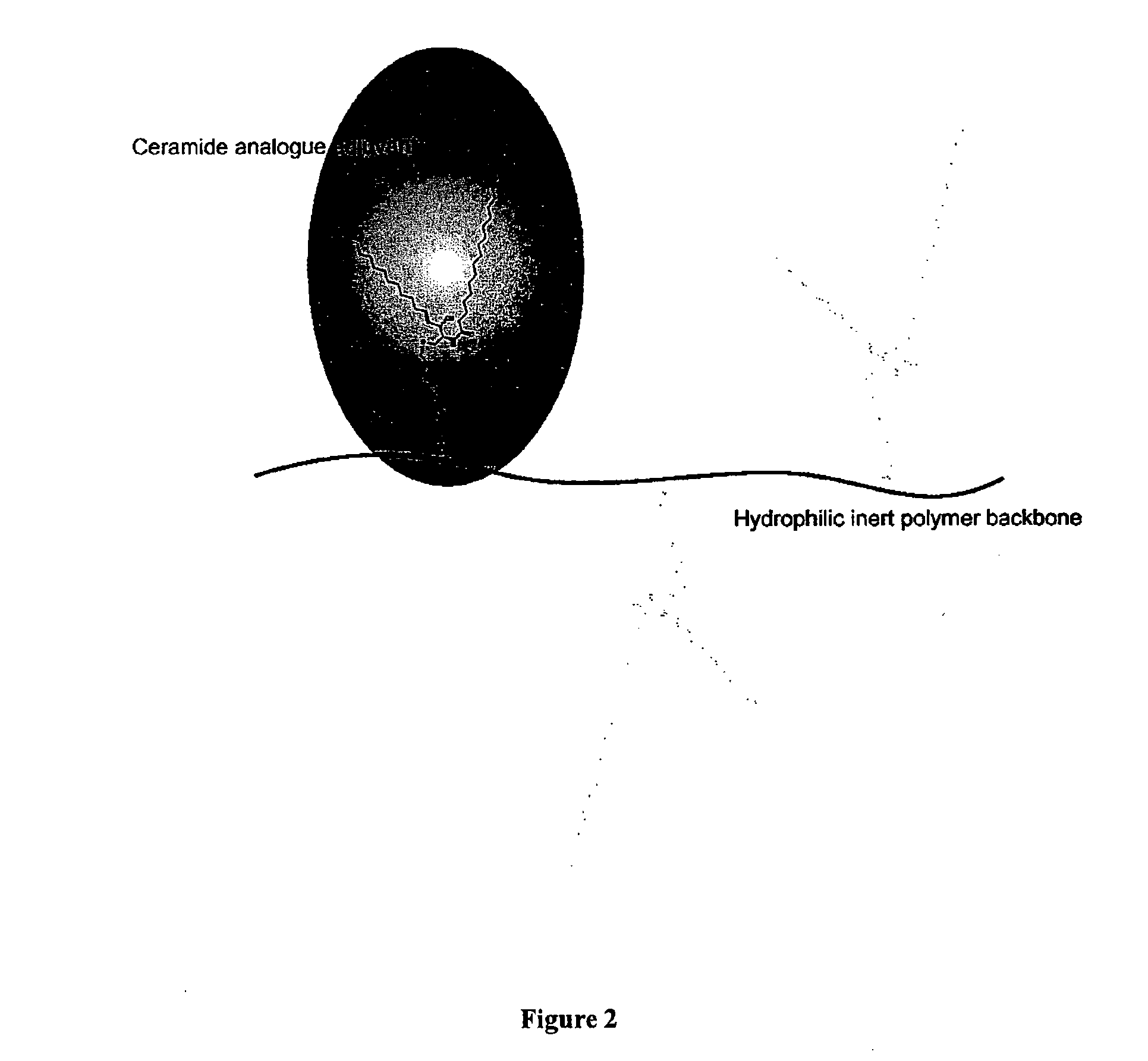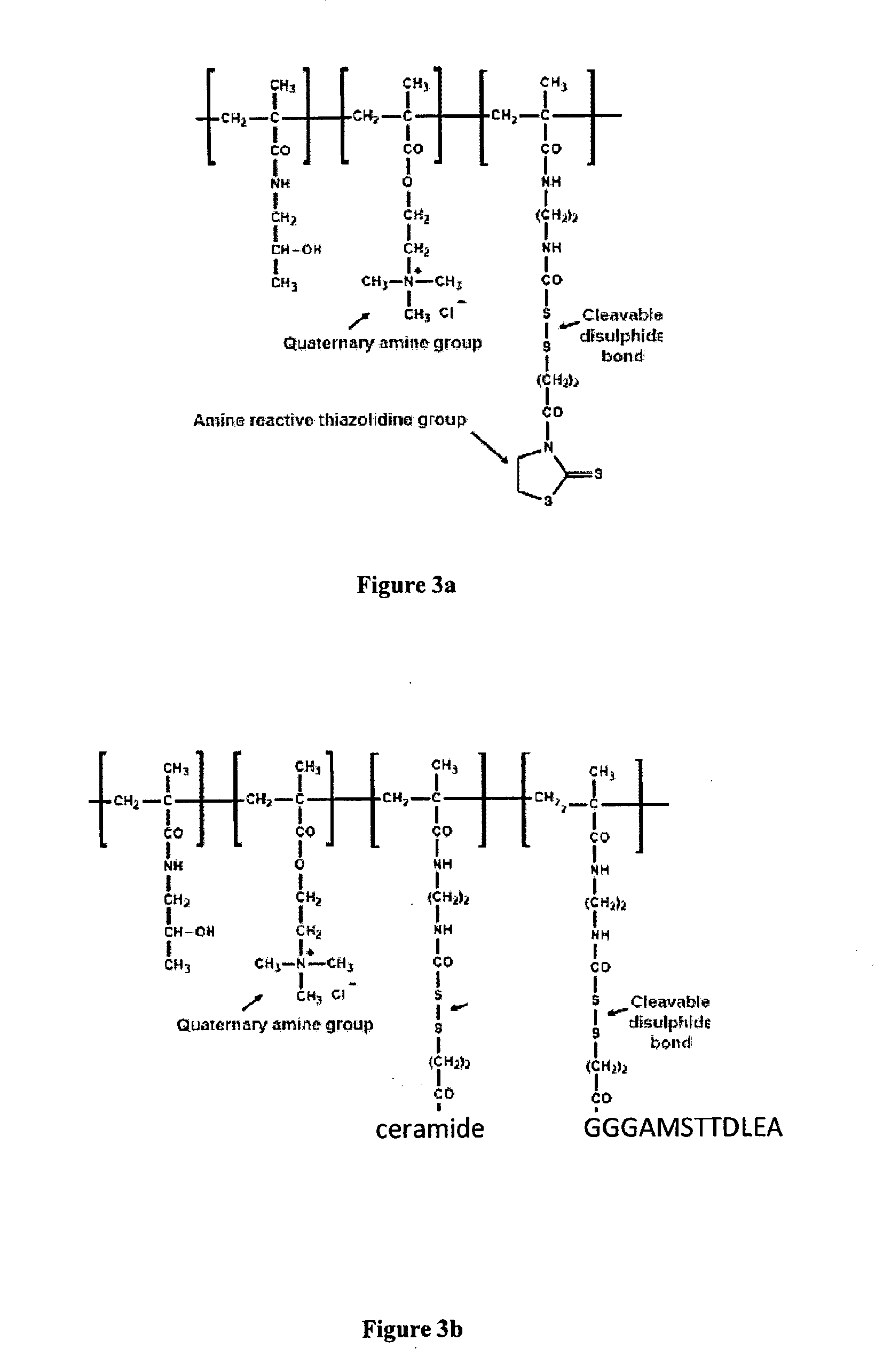Multi-valent adjuvant display
- Summary
- Abstract
- Description
- Claims
- Application Information
AI Technical Summary
Benefits of technology
Problems solved by technology
Method used
Image
Examples
example 1
Synthesis of Compounds for Binding to Soluble Polymers for Use as Polymer Enhanced Adjuvants
Synthesis of N-Pam3Cys-(N′-Boc-2,2′-(ethylenedioxy)diethylamine) (1)
[0119]
[0120]Pam3Cys was modified by carbodiimide coupling to a mono-Boc-protected diamine. Pam3Cys-OH (95 mg, 104 μmol) was dissolved in anhydrous DCM (5 mL) and added to PS-Carbodiimide resin (1.33 mmol / g, 138 mg, 185 μmol) and shaken for 5 min under Ar. N-Boc-2,2′-(ethylenedioxy)diethylamine) (33 mg, 132 μmol) was added in anhydrous DCM (1 ml) and shaking continued for 16 h. TLC (neat EtOAc) found no residual Pam3Cys-OH. The resin was removed by filtration and 50 mg of PS-benzaldehyde resin was added as an amine scavenger. After 24 h shaking the solution was filtered and the solvent removed under reduced pressure. The crude solid was purified by column chromatography (gradient elution 0-20% MeOH in DCM, product Rf 0.6) and isolated as a white solid.
Synthesis of N-Pam3Cys-(2,2′-(ethylenedioxy)diethylamine) (2)
[0121]
[0122]N-P...
example 2
Production of Polymer-Conjugated Adjuvant
[0124]Hydrophilic polymers such as poly[N-(2-hydroxypropyl)methacrylamide] bearing multiple pendant amino-, hydroxyl-, or thiol-reactive groups can be modified to bear immunostimulatory molecules such as N-Pam3Cys-(2,2′-(ethylenedioxy) diethylamine) (2) or ceramide analogues such as (3). This example describes the synthesis of poly[HPMA][MA-GG-TT] and its conjugation to ceramide analogue (3).
Synthesis of a Multivalent Aminoreactive Hydrophilic Copolymer
Synthesis of poly[N-(2-hydroxypropyl)methacrylamide3-(N-methacryloylglycylglycyl)thiazolidine-2-thione]
[0125]HPMA (1.00 g, 6.99 mmol), MA-GG-TT (234 mg, 0.77 mmol) and AIBN (200 mg, 1.21 mmol) were dissolved in anhydrous DMSO to a total volume of 10 mL (approximately 12.5 wt % monomer). The solution was deaerated by Ar bubbling for 20 minutes after which the flask was sealed and placed in an oil bath at 60 C with gentle stirring for 6 h. After this time the polymer was precipitated by addition ...
example 3
Linkage of Polymer-Bound Adjuvant to Vaccine
[0127]In this example the polymer-bound ceramide derivative is linked to the AMSTTDLEA, a peptide derived from the X protein of hepatitis B virus and known to be recognised by cytotoxic T lymphocytes.
[0128]A ceramide-polymer conjugate was synthesised as described in the previous Example, except that reaction conditions and the relative concentrations of reagents were optimised by comparing the effects of reaction time, temperature and concentration of reagents, in order to maintain approx 1 mol % of free reactive groups on the polymers at the time of precipitation. This material was dried and stored.
[0129]An oligopeptide with the structure GGGAMSTTDLEA, with blocked carboxy terminus and free amino terminus was produced by cleavage from the solid phase resin. The oligopeptide was dissolved in DMF and allowed to react to completion with the polymer-ceramide conjugate bearing 1 mol % reactive TT groups. This agent was then precipitated, dialy...
PUM
| Property | Measurement | Unit |
|---|---|---|
| Atomic weight | aaaaa | aaaaa |
| Solubility (mass) | aaaaa | aaaaa |
| Molecular weight | aaaaa | aaaaa |
Abstract
Description
Claims
Application Information
 Login to View More
Login to View More - R&D
- Intellectual Property
- Life Sciences
- Materials
- Tech Scout
- Unparalleled Data Quality
- Higher Quality Content
- 60% Fewer Hallucinations
Browse by: Latest US Patents, China's latest patents, Technical Efficacy Thesaurus, Application Domain, Technology Topic, Popular Technical Reports.
© 2025 PatSnap. All rights reserved.Legal|Privacy policy|Modern Slavery Act Transparency Statement|Sitemap|About US| Contact US: help@patsnap.com



